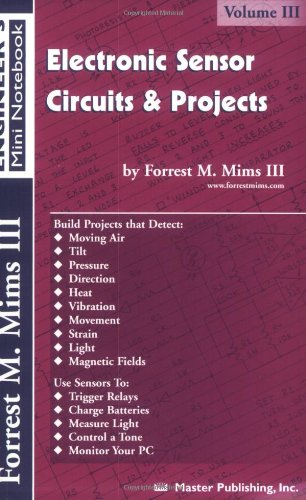Electronic Sensor Circuits & Projects book
Par kelley rachel le lundi, septembre 26 2016, 21:11 - Lien permanent
Electronic Sensor Circuits & Projects. Forrest M. Mims III

Electronic.Sensor.Circuits.Projects.pdf
ISBN: 0945053312,9780945053316 | 26 pages | 1 Mb

Electronic Sensor Circuits & Projects Forrest M. Mims III
Publisher: Master Publishing, Inc.
Corning, Binghamton University and Western Michigan University are working on a project where they will print electronic circuits on flexible glass. Connect the adjacent tracks of the touch pad to points A and B using thin wire. Green LED lights if there is sufficient moisture. AC Line Current Detector This circuit will detect AC line currents of about 250 mA or more without making any electrical connections to the line. To test the circuit, take moist cotton and place it on the sensor. You will be responsible for designing and developing hardware and firmware for miniaturized, low power wireless systems for biomedical and environmental sensing applications. LED D7 illuminates when bumper-wall distance is about 20 cm., D7+D6 illuminate at about 10 cm. Light Sensor Using Arduino: Same circuit, but using Arduino code for simpler and messing up the if else statement in there is really fun! Keep the touch pad in the place that is to be monitored. On this site, This Project is linked by many of the Electronics Websites. Touch pad can be a small piece of Strip board. This tiny circuit has no voltage source, it rather converts Rf radiations into Electric current and glow an LED =D This is most awesome project on this entire site! This circuit was designed as an aid in parking the car near the garage wall when backing up. I have no idea about components as I am not qualified in any way but have a very basic understanding of electrics.and I need to build a small circuit with a very specific task and it has to be cheap and small. We are seeking a highly motivated and versatile electrical engineer with a strong background in electronic circuits and embedded systems for full-time employment in the Baltimore/Washington DC area. Most project work will involve discrete component design, but experience with ASICs is a plus. In this period he has supported many electronics/electrical engineering students in their final year projects.